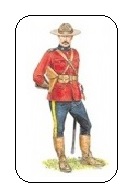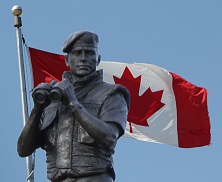True and Fascinating Canadian History

The Mystery of A Mountie
and His Able Alibi
by J. J. Healy
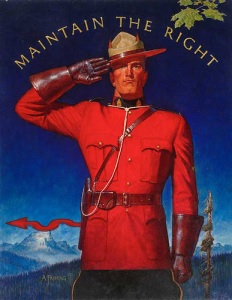
Trust is the sole foundation upon which love is built and it is of such importance that it guides our emotions and our judgement. In surveys, Canadians often rank trust as the most important of traits to describe those within the community who act in authority; judges, doctors, nurses, teachers, religious leaders and police officers to name but a few. All sorts of relationships are anchored in trust and the ability to believe in one another. Rebuilding faith within a community is always uphill whenever police officers misplace the trust which they have earned.
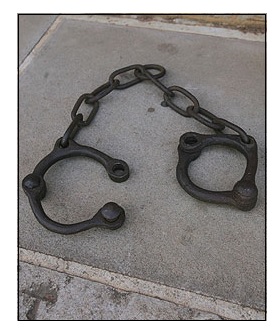
The story which follows is almost unbelievable. It is about trust abandoned; an RCMP Constable and his life of serious crime. And while it is true that the story is bizarre, perhaps there is a lesson or two for all police officers in The Mystery of A Mountie and His Able Alibi.
History does not reveal the birth origin of Reg.#13359, Constable Sidney George Young, but it likely wasin the badlands. It is known that he joined the Force in April, 1940, and soon after, trouble began to bubble and fizz. While at 'Depot' in January, 1941, Young was charged for two counts of disgraceful conduct. He was fined $10.00 in Service Court and it was recommended that he be dismissed. And although his conduct was offensive, Young was allowed to remain on Force strength and soon afterwards he was transferred to Vancouver, BC. and this is where very serious trouble erupted.
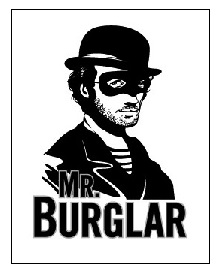
On April 3rd, 1941 Young was charged by the RCMP in Vancouver, BC with two counts of taking a police cruiser without authority. Young was fined $10.00 and he was ordered confined to barracks for 21 days. But, sanctions mattered very little to Young and on the following day, he was back in Service Court. This time he was charged for disobedience and he was handed 14 days hard labour. Young paid his debt and finally he was dismissed from the Force for being troublesome, unsuitable and untrustworthy. But, Constable Young would make news headlines again and he would soon give the RCMP and other area police forces plenty of cause for more headaches.
In the mid summer and early fall of 1941, Vancouver was in the grip of a string of armed robberies. All of them occured at drug stores and in the dark of night; the first robbery in July 1941, netted $69.00, the second on August 5th netted the robber $57.00, and on September 18th, he got $3.00. The Vancouver City Police (VCP) and the RCMP soon realized they were dealing with a daring thug who hit at his own pleasure, and even though some drug stores were staked out investigators could not catch the robber in the act.
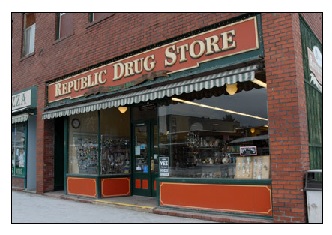
Then things turned nasty. On the night following the third robbery, a fourth and more serious attempted robbery took place. It was just before 11 pm when a tall, dark, athletic appearing young man walked into F. W. Fawcett’s Drug Store at 3750 Oak Street in Vancouver. A minute or two later, Mr. Fawcett was dead on the floor after being shot in the back. It appeared that he was trying to flee to the street. When investigators arrived, they found that no money was missing from the druggist's till but the killer had vanished.
At 72 years of age, Mr. Fawcett was very well known within the Vancouver community. He was regarded as the Dean of BC Pharmacists and he was a familiar guest at druggist conventions around BC's Lower Mainland. Investigators also pieced together that Mr. Fawcett had lived in deadly fear after he had been brutally beaten during an attempted robbery by a lone bandit the previous November. Investigators found strong similiarities in style and substance between the two robbery attempts. But, for the moment the police had no suspect.

Witnesses provided solid physical descriptions of the suspect from the last hold-up and the Fawcett murder. The descriptions bore close resemblance except for the clothing worn by the killer. One description of the murderer was given to police by a UBC student and another from a local resident who actually spoke to the suspect on Oak Street a short time before the murder. This local resident, Mr. Brisson and his wife operated a store near the Fawcett Drug Store and they were sitting in a parked car at the time when they noticed a man pacing up and down the sidewalk opposite Fawcett's Drug Store.
The Brisson's watched the man just in case he might try to break into their store. A few minutes later, they saw the same man enter Fawcett's Drug Store. Mr. Brisson told police that he believed he heard a gun shot from the drug store. Immediately afterwards, the killer dashed from the store and disappeared up the street. Descriptions of the murderer bore close resemblance to the bandit who two hours earlier had held up a drugstore on West Broadway. The only exception was the clothes worn by the killer.

In the meantime, the VCP had been working quietly and persistently with six Canadian prairie police forces including the RCMP. Finally, investigators got a break in their hunt for the killer. The break resulted in an arrest in Prince Rupert, BC related to a delinquent car retaining charge. The suspect was former RCMP constable Sidney George Young. As well, a stolen car from Winnipeg, MB and identified as having been used in some prairie hold-ups was recovered by the VCP in Vancouver. Police connected the stolen car to Young and he was returned to Vancouver for trial.
On December 15th 1941, former Constable Young plead guilty to three Vancouver hold-ups. He was sentenced to five years on each count to be served consecutively. But, he had to add some more salt into the wounds of the RCMP. At trial, he had the audacity to call Assistant Commissioner C. H. Hill as a character witness. Young asked the Commissioner if his Service Record contained anything in his favor. Commissioner Hill's reply was that it did not contain any recommendations for clemency. Then, as Young was hauled away, police investigators went to serious work on other crimes in which Young was a principle suspect.

Over the course of the violence, the Vancouver press covered each robbery very, very intently and it is quite worthwhile to review some journalism here. In the absence of police crime reports, investigative reporting by journalists very often can be accurate and descriptive. Often, journalists were able to sketch a time line of the robberies and the murder. Newspaper articles depicted the exhaustive investigation techniques which were carried out by the VCP, the prairie police agencies as well as the RCMP.
To begin, the Vancouver newspapers claimed that Young was responsible for one of the most intensive manhunts in Vancouver history, and it ended as police prepared charges against a 23 year old army deserter arrested at Prince Rupert. He was suspected to be the lone man who murdered druggist Mr. F. W. Fawcett. The hunt for Young had been a closely guarded secret of at least 6 police organizations from Winnipeg to Vancouver to Prince Rupert. Behind the scene, the whole investigation had been persistent, methodical and well coordinated.

The press reported that the net suddenly closed on November 28th afternoon when two men working at Prince Rupert were taken into custody and held for the VCP on charges of retaining a stolen car. One was a slim, dapper, dark haired suspect believed to be the man whose trail police had followed for weeks over hundreds of miles of western Canada.
Warrants were sworn after detectives located the auto in an east end Vancouver garage and verified it was the stolen Winnipeg auto. The men were brought to Vancouver to face trial on the retaining charge.
The story of the long chase and capture actually began when Inspector E. A. Pettit took charge of the investigation after the Fawcett murder. Working closely with RCMP Detective Sergeant John Haywood and Detectives Alex Paton and Ben Coultas, Pettit said he believed the Fawcett murder was connected to a series of prairie drug store hold-ups. It was known that the hold-ups in Winnipeg, Calgary, Edmonton and finally Vancouver all bore a similarity and that a stolen car was believed connected to all of them.
Finally, the VCP had a suspect's age, history and picture and this time they were sure that Young was their man. But, they still had to find the stolen car. They learned the car came to BC in August a month after the Calgary hold up. The trail of the 1936 coupe was picked up through police investigations of auto camps.
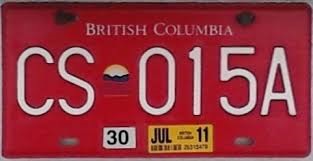
On November 27th, the break came. VCP detectives located the missing car in an east end garage bearing old, forged BC plates. The detectives began a last minute roundup of evidence and on November 28th warrants were sworn out for the arrest of Young and his companion. The police had ears on the street, and they learned the wanted pair were working in Prince Rupert.
On 3:30 pm Friday word was received that the warrants had been executed and the pair were being held in Prince Rupert. The other suspect assisted in the painting of the auto and was the person who rented the garage where the auto was stored. He was not implicated in the hold-ups and the Fawcett murder.
Although Young had been sentenced to fifteen years for the armed robberies, it was time for him to be jolted. On December 18, 1941, Young was charged by VCP with the murder of Mr. F. W. Fawcett. In the meantime, he was being incarcerated at Oakalla Prison in Burnaby, BC to await trial. Young made effective use of his time while sitting in his cell at Oakalla. Sitting, waiting and plotting.
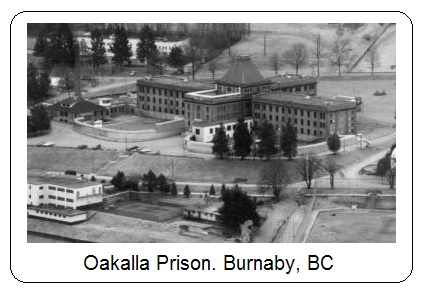
On January 10th 1942, Young was being escorted from Oakalla for his preliminary hearing on the murder charge. He was sitting in the back seat of a VCP cruiser when suddenly he hit Detective Harrington with a lead pipe. Young then attempted to steal Harrington's service pistol. The police cruiser was stopped and the two officers in the front seat jumped out and helped to subdue Young.
Fortunately, Young's right hand had been shackled to Harrington's left hand and Young did not have the strength to knock out Harrington. This incident happened just as the police cruiser left Oakalla's main gate. Constable Harrington was taken to a hospital for treatment of a cut on his head but he was not seriously hurt. Later that day, Young was committed to trial at the hearing.
An investigation got under way at Oakalla to determine where Young got the iron bar. Oakalla Prison staff claimed that they had searched Young before taking him to the Main Gate and the awaiting VCP cruiser. The guards on duty on the South Wing had searched him before he was taken to the gate. Young had been treated as a dangerous type and he had been carefully watched. He, however, was permitted outdoor recreation in the open yard and he was also permitted to receive visitors.

At the murder trial, on April 23rd 1942, Reg.#11517, Jack Haywood and Reg.#10758, Corporal A. H. Owen-Jones testified. In his summation to the jury, Justice Smith advised the jury that they had to consider Young's wife's testimony that Young was in bed with her at the precise time of Mr. Fawcett's murder. From Young's perspective, his wife's evidence was a very able alibi.
And, his wife's evidence was accompanied with the weakening of identity evidence frought by discrepancies given by the witnesses. Young's lawyer also pointed out in his address to the jury, that the prosecution had not been able to produce the murder weapon let alone link any weapon to Young.
Young was found not guilty of the Fawcett murder.
The reasons for Young to turn to a life of crime and deception are wrapped up in mystery. But, there can be no doubt that he betrayed the trust that was given to him when he first joined the Force. And, whether or not Young actually committed the Fawcett murder also remains a mystery even to this day.
One can imagine that Young's acquittal on the murder charge was a total surprise to everyone. And no doubt his walk was disappointing to the police investigators. But, there may be a lesson for all police officers in The Mystery of The Mountie and His Able Alibi. And the lesson is how important it is that police officers cling to a rock solid belief system -- trust in themselves and their investigative ability, trust in the judiciary and the jury, faith in their community, their family and the moral ethos of the police profession. When one is alone, these are the beliefs and sentiments which come to mind.
A healthy belief system will support the police officer in times of trouble. And one will be better off and live a better life than without it.
I would like to acknowledge and sincerely thank Volunteer and Historian Mr. Wayne Lutz of Vancouver, BC who sent me the Vancouver newspaper articles which contained the story of Sidney George Young, the robberies and the Fawcett murder. Again, thank you Wayne.
Reporting from the Fort,
J. J. Healy
March 10, 2016
The Vancouver Daily Province. April 24, 1942, p. 9,
The The Vancouver Sun. April 24, 1942, p.17
and The Vancouver News Herald. April 24, 1942, p.1 & p.5.
